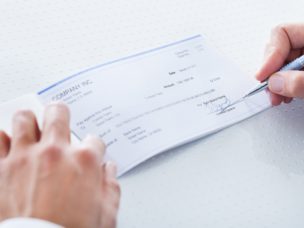Stay in the know
Subscribe to the Hospitality Blog and we'll send you an email each time something new is posted.
Subscribe to the Hospitality Blog and we'll send you an email each time something new is posted.
Blogs
Hospitality Blog
What the Hospitality Industry Should Know About New Regulations and Guidance for the CARES Act
The Small Business Administration (“SBA”) continues to issue new guidance and regulations pertaining to the Paycheck Protection Program (“PPP”) at a swift pace. Here is a brief summary of some of those regulations and guidance provisions.
Safe-Harbor For PPP Loans Under $2 Million
As discussed in a prior blog post, there have been numerous updates to the SBA CARES Act FAQs pertaining to the certification (the “Certification”) that all PPP borrowers must make on page 2 of the PPP borrower application form (SBA Form 2483) that “[c]urrent economic uncertainty makes this loan request necessary to support the ongoing operations of the Applicant.” While many of those prior updates increased concern about when a PPP borrower may make such Certification in good faith, on May 13, 2020, the SBA clarified that any PPP borrower that, together with its affiliates, received PPP loans with an original principal amount of less than $2 million will be deemed to have made such Certification in good faith. Such safe-harbor was created by the addition of Question #46 to the SBA CARES Act FAQs.
Safe Harbor For Repayment of PPP Loans Extended
As discussed in a prior blog post, the SBA created a safe-harbor allowing any PPP borrower concerned about the Certification described above to repay its PPP loan by May 14, 2020 without risk of repercussions. On May 13, 2020, the date for such safe-harbor was extended until May 18, 2020.
PPP Loans May Be Increased To Include Partners Self-Employment Income
On April 14, 2020, the SBA issued a regulation that, among other things, confirmed that partnerships may include the self-employment income of the partnerships’ partners (up to $100,000, annualized) as a payroll cost when sizing the PPP loan (and that a partner in such a partnership cannot apply for his, her or its own PPP loan). Prior to such regulation, many banks would not allow self-employment income to be included as a payroll cost. As a result, many partnerships that applied for PPP loans prior to April 20, 2020 applied for PPP loans that were smaller than the loan amount allowed by law, as clarified by the above described regulation first issued on April 14, 2020.
On May 13, 2020, the SBA issued a new regulation, which allows the lender of a partnership that received a PPP loan to submit a request through SBA’s E-Tran Servicing site to increase the PPP loan amount to include appropriate partner compensation, even if the PPP loan has been fully disbursed. However, the PPP loan cannot be increased if the lender’s first SBA Form 1502 report to SBA on the PPP loan has been or should have been submitted. According to an SBA regulation first issued on May 8, 2020, PPP lenders must electronically upload SBA Form 1502 information within 20 calendar days after a PPP loan is approved. However, for loans approved prior to the availability of the new SBA Form 1502, the deadline for uploading is May 22, 2020.
PPP Loans May Be Increased Based On Seasonal Employee Regulations
On April 27, 2020, the SBA issued a regulation that provided an alternative criteria for calculating the PPP loan amount for seasonal businesses. In general, borrowers can calculate their aggregate payroll costs using data either from the previous 12 months or from calendar year 2019. For seasonal businesses, the applicant may use average monthly payroll for the period between February 15, 2019, or March 1, 2019, and June 30, 2019. An applicant that was not in business from February 15, 2019 to June 30, 2019 may use the average monthly payroll costs for the period January 1, 2020 through February 29, 2020. Borrowers may use their average employment over the same time periods to determine their number of employees, for the purposes of applying an employee-based size standard. Alternatively, borrowers may elect to use SBA’s usual calculation: the average number of employees per pay period in the 12 completed calendar months prior to the date of the loan application (or the average number of employees for each of the pay periods that the business has been operational, if it has not been operational for 12 months).
On May 13, 2020, the SBA issued a new regulation, which allows the lender of a seasonal business that received a PPP loan to submit a request through SBA’s E-Tran Servicing site to increase the PPP loan amount in light of the alternative criteria for calculating the PPP loan amount for seasonal businesses described above, even if the PPP loan has been fully disbursed. However, the PPP loan cannot be increased if the lender’s first SBA Form 1502 report to SBA on the PPP loan has been or should have been submitted. According to an SBA regulation first issued on May 8, 2020, PPP lenders must electronically upload SBA Form 1502 information within 20 calendar days after a PPP loan is approved. However, for loans approved prior to the availability of the new SBA Form 1502, the deadline for uploading is May 22, 2020.



